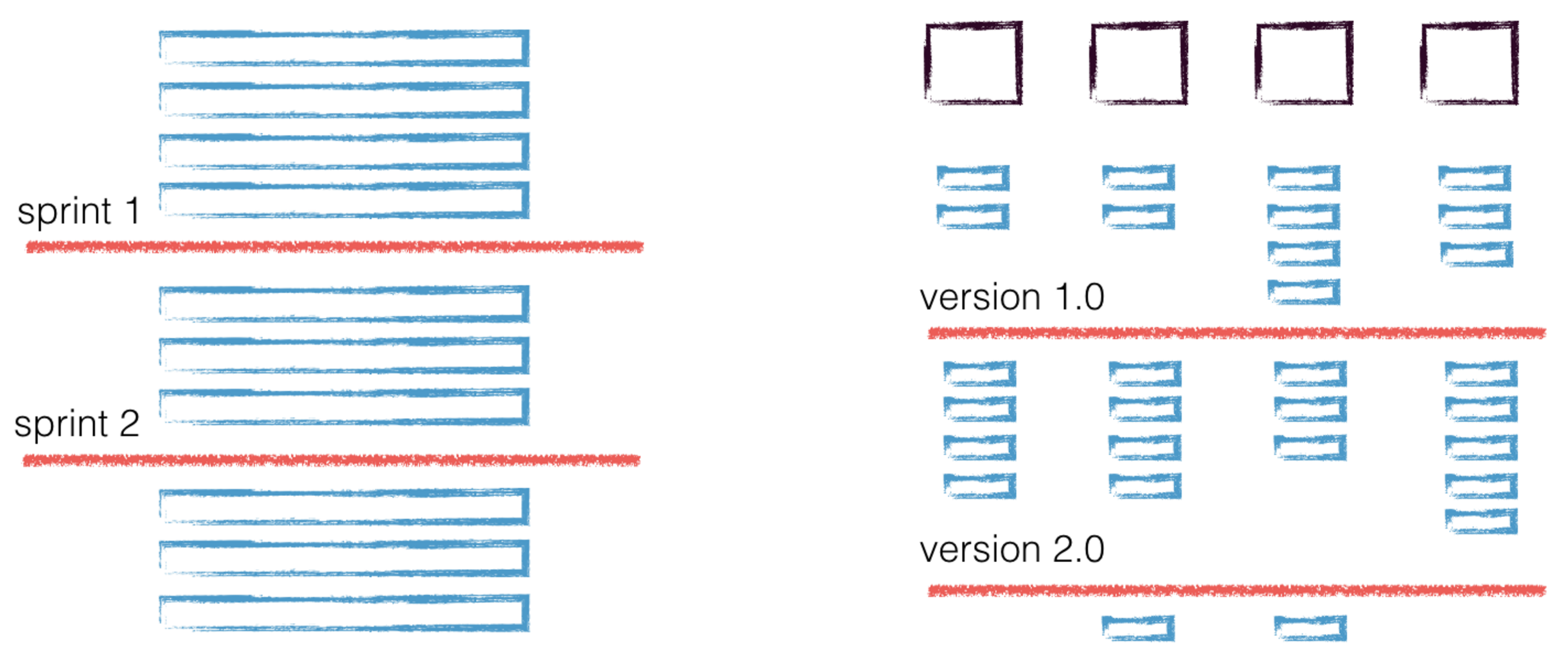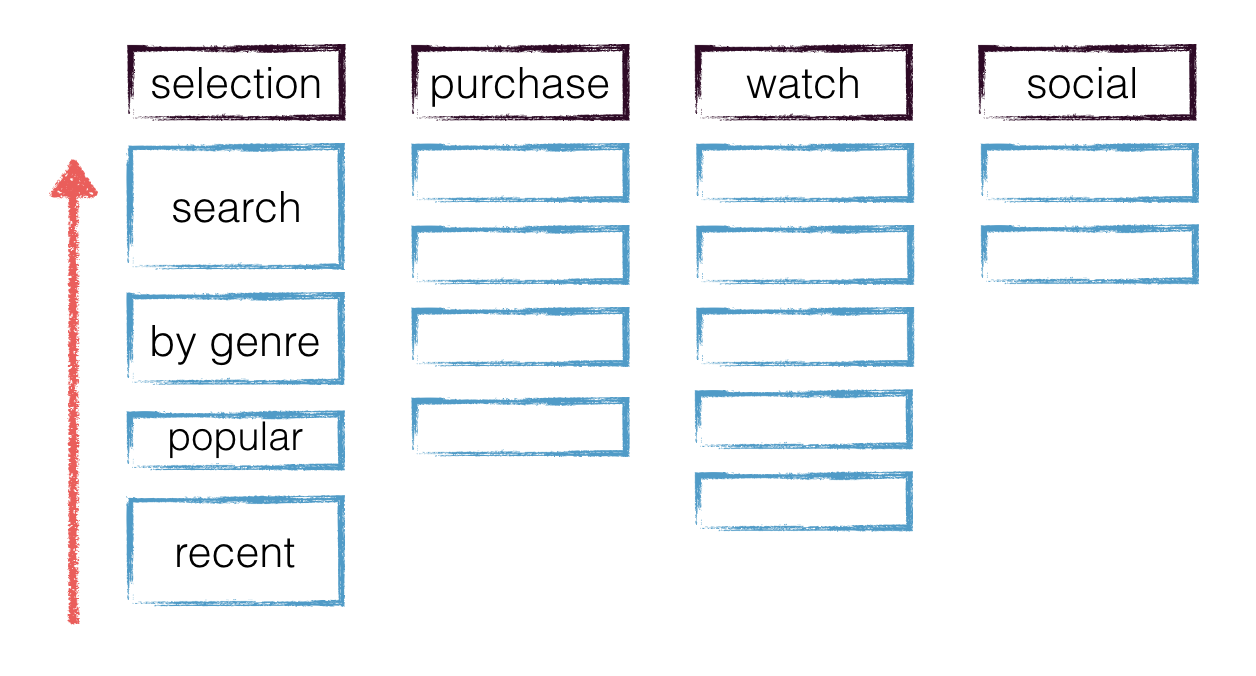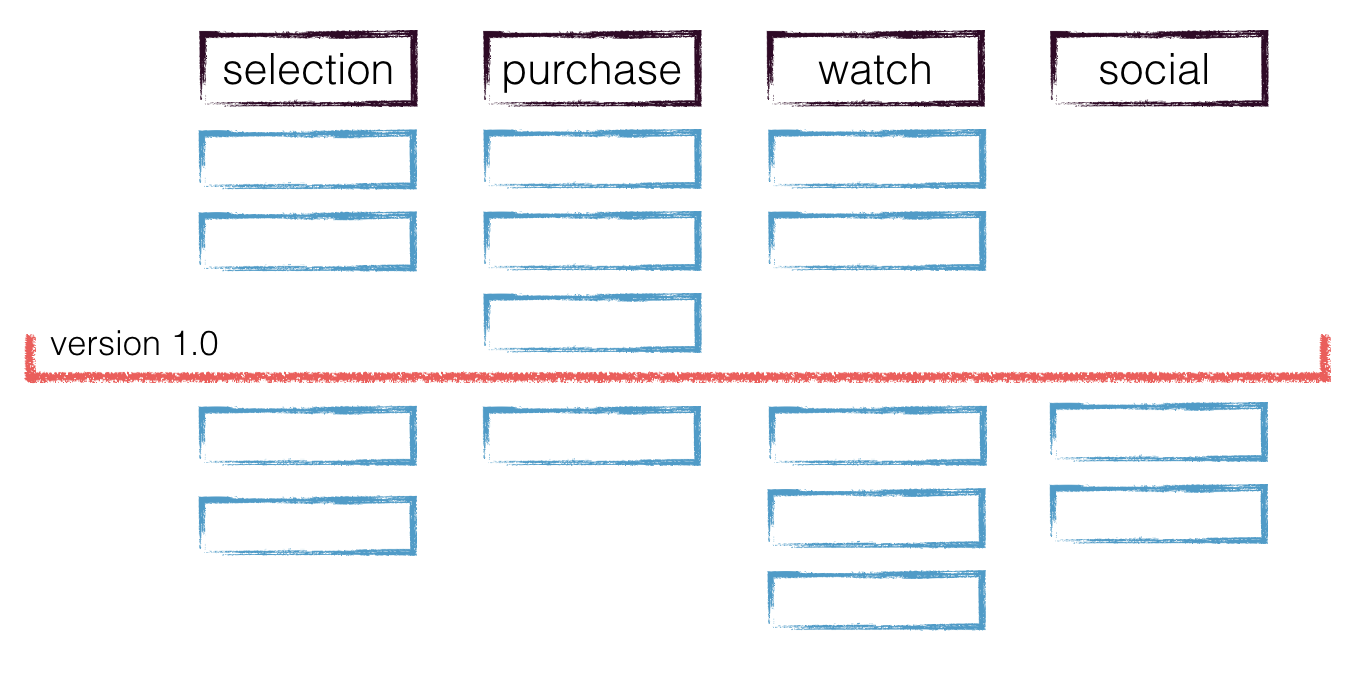A story map describes the journey a customer undertakes with a product, including activities and tasks conducted and completed. Agile Teams develop story maps in collaborative sessions to get an understanding of their customers and the desired results they wish to achieve. In this article we'll go over what story maps can do for you.
User stories
Before we get into the mapping of user stories, let's look at the flat backlog. The upper part of this backlog is accurate and ordered, but the further down we go, the messier it gets. The flat backlog does not describe a customer journey or explain what users are trying to achieve. It simply shows one feature after another.
Let's look at this backlog for the story map that the team is developing. It offers the following advantages:
- An understanding of who the customers are.
- A clear picture of problems that customers might overlook.
- A backbone of customer flows through the product.
- An ordered story map which has a corresponding version or sprint planned.
Overall, story mapping is the best way to create a common understanding within an agile team that I've come across so far.
Anatomy of a story map
One aspect of a story map that we need to get familiar with is the backbone. The backbone maps a user's high-level activities with the product. Let's take the example of watching a movie through a streaming service. High-level activities would include the following:
- select film
- purchase film
- watch film
- rate/recommend film
The team can chronologically arrange customer activities based on how a user interacts with the product.
Under every backbone main activity, we can create user stories that illustrate the customer journey. For example, under the activity, "choose film," we can include stories for the following actions:
- search
- search by genre
- search by 'recently released'
- search by 'popularity'
As soon as the team puts the backbone and stories in order, it's time to sequence the work. What do we want to deliver in the minimal viable product? In Version 1.0? Version 2.0? Here, we'll split the story map horizontally to show what belongs to each release and what doesn't.
Minimum viable solution
When the team has a story map, it has a readily-available work strategy related to the delivery. During the team's delivery, progress can always be compared with the story map to see if everything is on track.
Note: a team's product manager can start the sprint planning session, in that the story map gets reviewed to make sure that all team members are on the same page and understand which additional benefits it can now provide the customer.
And when we deliver the minimum viable solution, we also minimize waste in terms of product and process.
Story maps lead to better results and less output.
Easy agile user story maps for JIRA
I'm such a big fan of the story mapping method that I expanded on the subject with Easy Agile User Story Maps for JIRA. Easy Agile Story Maps makes everything – as the name says – easy to collaborate in JIRA and to create a product backlog. Have a look:
You are currently viewing a placeholder content from Youtube. To access the actual content, click the button below. Please note that doing so will share data with third-party providers.
User story mapping is an essential tool for all agile teams – an excellent piece of technology that will guarantee that the team understands its customers, can clearly outline the solution, and can stay focused on the delivery.
If you want to try Easy Agile User Story Maps for JIRA, please contact //SEIBERT/MEDIA and check out the overview at the Atlassian Marketplace.
This is a guest post from Nicholas Muldoon, who worked as a coach for product and development managers at Twitter in San Francisco. Before that, he was the product manager for Atlassian GreenHopper. The original article was translated from German to English. Lesen sie diese Seite auf Deutsch.






